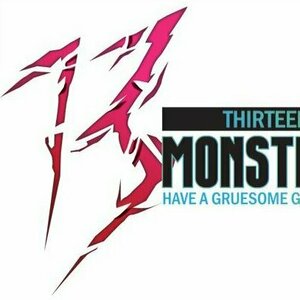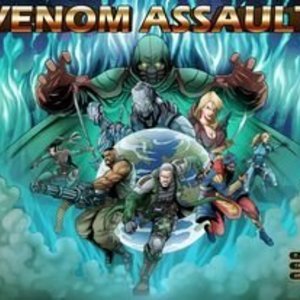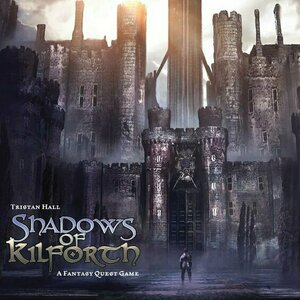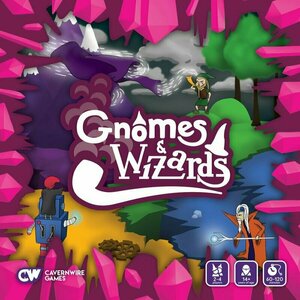Purple Phoenix Games (2266 KP) rated 13 Monsters in Tabletop Games
Dec 5, 2019
As I mentioned in the intro, and as you can see in the first photo below, 13 Monsters starts out as a memory tile-flipping game and then becomes a bash-em’-up for domination. The goal of 13 Monsters is to end the game holding the monsters with the highest total Hit Points (HP). Now how you get there is another matter entirely.
DISCLAIMER: We were provided a prototype copy of this game for the purposes of this review. These are preview copy components, and I do not know for sure if the final components will be any different from these shown. Also, it is not my intention to detail every rule in the game, as there are just too many. You are invited to download the rulebook, purchase the game through the Kickstarter campaign running until December 20, 2019, or through any retailers stocking it after fulfillment. -T
To setup 13 Monsters, a randomized 9×9 grid of monster tiles are spread across the play surface with the longer title tile placed square in the middle (see what I did there?). Place the five d6 on the table to be used by any player. Determine the first player (whomever is the most beastly) and you are ready to play!
Turns are played in phases where you will initially be hunting the playing field trying to find matching monstersets to build a complete monster. Monstersets are horizontally matching tiles belonging to the same monster. So the top set is the head, the middle is the eyes, and the bottom is the body of the monster. This phase will continue in turns until multiple players have at least one monsterset. Things now start getting interesting.
Once you have at least one monsterset you can, before hunting from the field, offer to trade monstersets with other players. You may also use an ability named “Sacrifice,” which allows you to rearrange your monstersets to create a more powerful monster. Why would you want to rearrange? Monsters come in five elemental flavors – fire, water, earth, air, and ghost. Monsters with matching elemental monstersets are more powerful than those with mismatched elemental monstersets. This will come into play later when the monsters battle for supremacy.
Battles. Once you have a complete monster (head, eyes, body) you can, on your turn and before hunting, attack another monster. When attacking, both the attacker and defender will be throwing the five dice in hopes of ending with the highest total of pips of a matching set (like five 6s on the d6). The winner will then claim a monsterset from the involved monster (or separate monsterset) and add it to their collection. Monsters with more elementally-matching sets will be able to throw the dice more times versus a completed monster with mismatched elemental sets, so THAT is why using Sacrifice can make or break a battle.
There are other special abilities that are unlocked with different combinations of monsters: “Permafrost” allows the player to place a die on a tile that other players will not be able to flip on their hunting turn. However, once a battle is initiated all Permafrost dice are removed from the board to be used in the battle, so it is not a long-term tactic to be used. “Prophet” allows the player to flip over three tiles instead of the normal two tiles and can be very powerful when used correctly – you need to have a “Monster O.G.” which is a monster with all matching tiles belonging to the same completed monster. The final ability is “Supernova” and can only be used by a completed 13th Monster (the only Ghost-element monster, shown below). Supernova allows the player to sacrifice the 13th Monster in order to absorb (steal) a complete monster from any player and add it to their personal collection. The 13th Monster then leaves the game, but the controlling player will still receive the HP points for having collected and used it.
Play continues in this fashion until all tiles have been collected from the playing field. Once the final pair is taken, players are then allowed to declare one final battle against any opponent in hopes to bolster their final score. The player with the most HP shared among their completed monsters is the winner and ultimate Beast Master!
Components. Again, we were provided a prototype copy of the game, but from what I understand, the final production copy of the game will be very similar to this version if not exactly the same. What comprises the game is a ton of monster tiles and five dice. That doesn’t sound like a lot, and it’s not. But these are great quality tiles and normal quality dice (which I am hoping will become pink to match the main color found throughout the game). I love the overall art style. The art is what really pops out at you because the monsters are all uniquely weird and intriguing and kinda cute at the same time. I also very much appreciate that the team thought to include little bubbles next to the element icon on the tiles to indicate to which layer the tile belongs: head, eyes, body. Excellent touch. Overall the components are great, and the rulebook is killer. Outstanding work went into making this game visually stunning.
Is it a good game? It is certainly a very cool spin on Memory and adds modular monster building and player vs player battles where you can win each others’ components. I love it! Even though I am horrible at memory games, this gives me options once I do find a monsterset. I can trade and attack my way to building more and better monsters – but the dice have to be on my side, and I’m cool with that. If you are looking for something to add to your collection that is a brilliant hybrid of many different mechanics and looks absolutely incredible on the table, then please check out 13 Monsters. It rewards tactics, but also has that element of luck to help balance everything out. I’m a big fan!
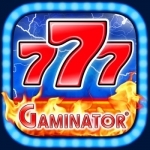
Gaminator - Casino Slots
Games
App
The waiting is over: The one and only true Gaminator App is now available on your mobile device!...
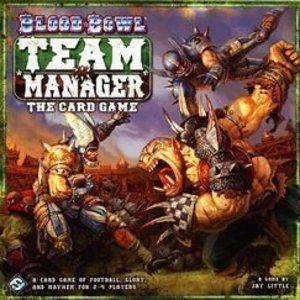
Blood Bowl: Team Manager – The Card Game
Tabletop Game
Blood Bowl: Team Manager - The Card Game is a bone-breaking, breathtaking standalone card game of...
Boardgames DeckBuilding BloodBowl
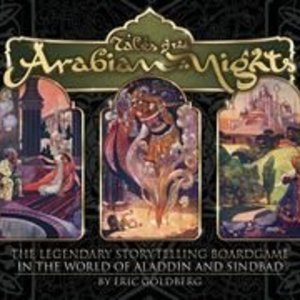
Tales of the Arabian Nights
Tabletop Game
In tales of the Arabian Nights, you are the hero or heroine in a story of adventure and wonder just...
board game storytelling questing
Purple Phoenix Games (2266 KP) rated VENOM Assault in Tabletop Games
Jan 25, 2021
VENOM Assault is a deck-building game very similar in style to Legendary: A Marvel Deck-Building Game (which, if I have to reference again will just call Legendary). Players take control of a team of (relative) wimps in order to help recruit the real elites and battle the evildoers plus their henchmen. Sound familiar? For this review I will be playing the Solo rules, which are the same as the multiplayer rules, but for one player. Novel, eh?
DISCLAIMER: We were provided a copy of this game for the purposes of this review. This is a retail copy of the game, so what you see in these photos is exactly what would be received in your box. I do not intend to cover every single rule included in the rulebook, but will describe the overall game flow and major rule set so that our readers may get a sense of how the game plays. For more in depth rules, you may purchase a copy online or from your FLGS. -T
To setup a game, please follow the rulebook as there is way too much to cover here in complete detail. The setup should look similar to the following photo. Here is what you will see: a space for the Mission scenario in the upper left corner. To its right a space for the active Event card. Next to that is the area for the VENOM Support cards to be displayed. Then the VENOM Support deck and discard areas. Below the Mission area is the space to track threat level and the current VENOM Leader’s Health and Defense values. Beneath those trackers is an area for four decks: the VENOM Leader deck, Reward deck, Event deck, and Event discard. To the right of this area is the Training Ground (recruitment zone), the Recruitment deck, and the Retirement pile. In the middle of the board are seven spaces to be populated with Reward cards and VENOM Leaders on top of the Rewards. Each player is dealt six Recruits and four Commandos and will shuffle these to create their draw deck. The players then draw five cards to create their hand and the game may now begin! Go save the world!
I will not be covering every aspect of a turn but will highlight the goings on. The Commander (first player) will draw and read the Event for the round. Events can be helpful for the players, extremely hurtful by advancing the VENOM plot, or even uneventful altogether. Next, player(s) will enter the Recruitment Phase. During this phase players will be using their entire hand to total the recruitment points that can be spent on recruiting those elite soldier, vehicle, and location cards from the Training Ground right into their discard piles.
Once the Recruitment Phase is complete, the Tactical Phase begins, and this is a large part of the game that helps differentiate it from others of its like. The players will choose one of the seven revealed VENOM Leaders on the map to attack in combat (if they choose – this is optional). Using the stats on the VENOM Leader card the players will adjust the Health and Defense values on the trackers on the board. If the VENOM Leader has any abilities that would trigger during this phase, then they trigger now. These could include Global Abilities as well. Once the Leader is done with their abilities, the players will choose one of their cards played to become the Combat Leader. This character now may not use their printed ability but will use their Combat Value (crossed pistols) to place combat dice on their card. The other team members in the combat will add dice to the pool as well if their abilities direct them. Next, the VENOM Leader will call forth their VENOM Support armies to aid them in the combat round. Once displayed, any hero Tactical Phase abilities can be resolved. If VENOM Support armies still are active, their abilities may be resolved at this point.
As the Tactical Phase ends, the Combat Phase begins. The Combat Phase is where the players are able to roll their combat dice in the hopes of besting the VENOM Leader’s Health and Defense values. Defense values dictate the dice values that need to be hit or exceeded to equal a successful attack. The Health value is how many successes are needed to defeat the Leader. However, once rolled the VENOM Leader will trigger any Combat Phase abilities at this time. Once complete the hero team will be able to resolve their own Combat Phase abilities, if any. Finally, the VENOM Support will resolve their Combat Phase abilities. Now the dice may be completely resolved against the Leader, after all abilities have been resolved. If the Freedom Squadron (heroes) defeated the Leader, they take the Leader and Reward cards into their VP pile. Depending on the Mission, these Rewards may be necessary to win the game, and all will have VP values.
After a lengthy Tactical and Combat Phase, the players then enter the Retirement Phase. The players may retire a card from their hand, thus removing the card from the game entirely.
Once a card has been retired (or not), the End of Turn Phase will help clean up the mess of the current round. Any other End of Turn Phase abilities will trigger, and used cards will be discarded to the appropriate areas and refills of key points on the board and players’ hands will setup the next round of play.
Once the Mission card’s success or failure stipulations have been met the game is over and, with any luck, the Freedom Squadron has defeated VENOM once and for all!
Components. This game boasts a large game board, a metric ton of cards, some dice, and some cardboard tokens. All the components are of fine quality and I have no issues with them. The art style used in the game is pleasing and, thankfully, not over-the-top gory or bloody or anything.
You may have noticed or thought that perhaps this game is taking inspiration from a cartoon/toy line from the ’80s, and I would very much agree with you. Could it be called Legendary: G.I. Joe? Maybe, but this one stands on its own, though very similar to the Legendary system. What I do like about VENOM Assault is the fact that it already comes with a large amount of incredible cards to be recruited. I do not know if I will ever feel the need for extra heroes in this game, whereas with the Marvel Legendary one can really go overboard trying to collect all the mini expansions and big box expansions just to find their favorite Marvel entities. Since VENOM Assault isn’t tied to any specific IP and is more generic overall, each character provided is its own thing, not a specific hero that one has grown up loving their entire life.
You see, the problem with those mini expansions in Legendary, at least for me, is that each one brings with it a host of heroes AND a host of new keywords and rules that must be remembered or referenced until it becomes second nature. In VENOM Assault, the rules stay the same and play is altered by the Missions and which characters can be recruited. I like a more reliable and static ruleset when I’m playing an intense game. So point goes to VENOM Assault here too.
Now, I was never into G.I. Joe and I am not at all a war or guns kinda guy, but I am really attracted to this game. I don’t necessarily think of my heroes as going in and shooting the place up, but rather taking Navy Seals-style tactical maneuvers to eliminate the target. So the point is that if you were never into that IP before, you should not feel alienated by this one. It appeals to all, in my opinion.
I said previously in this review that VENOM Assault is knocking on the door of bumping Legendary from my Top 10 games. I continue thinking about it even when I am not playing, and that is a mark of an excellent game for me. If I never think of a game again after playing, there is no way it remains in my collection. This one, however, has me considering different strategies in my head even now as I’m typing.
If you are in the market for a great deck-builder with worldwide espionage at its heart, I urge you to grab a copy of VENOM Assault. If you like the Legendary system but are looking for something just a little different, check this one out. If you just enjoy owning games that are fun and make you think, but also include a bit of luck in the dice rolls, then you owe it to yourself to play this. I really think you’ll enjoy it, as I have. Okay, time to setup another game.

Teotihuacan: Expansion Period
Tabletop Game
Teotihuacan is expanding into an empire! The city is growing beyond its old borders, military...

Jamaica
Tabletop Game
This is a pirate-themed tactical race game with player interaction and side goals (e.g. detouring...
Boardgames PirateGames GatewayGames RacingGames BeautifulGames
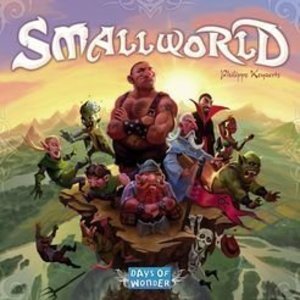
Small World
Tabletop Game
In Small World, players vie for conquest and control of a world that is simply too small to...
Boardgames BetterThanRisk DaysofWonderGames
Purple Phoenix Games (2266 KP) rated Shadows of Kilforth: A Fantasy Quest Game in Tabletop Games
Sep 3, 2020
Shadows of Kilforth is subtitled, “A Fantasy Quest Game.” Right there in the title you find out exactly what you are up against in the very foreboding but unassumingly-sized box. A game set in a fantasy world that is focused on questing. I have to admit up front that this review will be treated a little differently as the rulebook is hefty and nobody wants to read a thorough rules essay on Shadows. So I will give you a very high-level overview of the main steps and then give you my thoughts on how it all works together.
DISCLAIMER: We were provided a copy of this game for the purposes of this review. This is a retail copy of the game, so what you see in these photos is exactly what would be received in your box. I do not intend to cover every single rule included in the rulebook, but will describe the overall game flow and major rule set so that our readers may get a sense of how the game plays. For more in depth rules, you may purchase a copy online or from your FLGS. -T
Shadows of Kilforth is essentially a card and dice RPG-esque adventure game with an Asian-style theme but set in a fantasy world where locations will be devastated into gloom (building upon the first in the series Gloom of Kilforth). The players, as the heroes, have the daunting task of journeying throughout Kilforth’s 25 locations to collect items, allies, spells, and titles to overcome main quests and subquests before every location falls into gloom. These quests usually have the players gathering specific card types to satisfy and complete. Once main player storyline quests, called Sagas, are completed the hero levels up and when they complete their fourth quest in their main Saga they may attempt their Finale and then may finally assault the big boss, the Ancient.
Each turn players have Action Points (AP) to spend on doing different actions: movement, discovering rumours (yes, I know it’s the Queen’s English), confrontations, and regaling a Saga chapter, among several others. Some actions are free actions, called Deeds. These include resolving loot tokens, assaulting an ancient, exchanging items between players, and several others. By using combinations of Actions and Deeds players will be able to travel around collecting those items, allies, and so forth needed to complete their Saga chapters.
To complete objectives and quests, players will typically be rolling dice to meet requirements on the cards. This, as all role-players know, can be either supremely lucky or incredibly and predictably debilitating. Skill checks are abundant in Shadows and diversifying characters may or may not have advantages by being able to complete Fight, Study, Sneak, and Influence tests. Players will win if they can complete their Sagas and defeat the Ancient before all of the locations fall into gloom, signaling the end of the game.
All this, again, is very high-level and there are many intricacies in Shadows that I just cannot go over for the sake of time and the health of my typing fingers. But, the game can be played solo, cooperatively, or competitively. So depending on the mode of play and number of players Shadows can range from a 45 minute foray to multi-hour epics. This is why I have played this solo with one character for my plays.
Components. Shadows of Kilforth is very card-heavy, but also includes other goodies. The cards themselves are firstly quite numerous, but also good quality. I can see myself sleeving this and loving every minute of that process. Aside from the cards, the game includes standees for player pieces on the card map, wooden components to track HP, AP, Fate, Obstacles, Gold, Hidden characters, great swirly 6d6, and also cardboard chits for Loot tokens. I haven’t even mentioned the art yet and that may be the most stunning component in this game! I LOVE a game with great art, and Shadows has simply amazing art. This is not usually my style of game art either, but it is so pleasing and everything makes sense and gets me immersed in the game. Everything provided is wonderful quality and an absolute joy to use during play.
Ok so like always, we place our ratings graphic right at the top of our posts so our readers can see right away what we think of the game. As you can tell, I love Shadows of Kilforth. It has essences of so many games I enjoy pieced together in a very attractive and captivating package. The movement and subsequent destruction of map-cards are reminiscent of Forbidden Island/Desert and Tiny Epic Defenders, which I really love (don’t hate – it’s a good game). The gathering of select card types and returning to a location to complete feels like fetch quests in MMORPGs (Final Fantasy XI being my main squeeze for many years). Obviously dice skill checks and level ups from tabletop RPGs are in there as well.
Shadows is just such a great collection of mechanics that I love that I can see myself playing this game over and over and over. Caveat: I will never play this any way other than absolutely solo. My first play, yes a learning session, was just shy of two hours from setup to tear-down. Adding players will increase game length, and playing with AP-prone friends is a no-go for me on Shadows; I had to reference both the excellent provided cheat sheet and the rulebook throughout the play but I eventually got the hang of it and was able to fly through. I may play this solo but with multiple characters cooperatively someday, but I do not wish to play this with other people. Ever.
So here’s my final thought. Shadow of Kilforth is a beefy game, but is well worth the time and effort to learn and play a couple times before passing judgment. It has everything I love in a game and I can’t stop thinking about it. I want to play all the different Race/Class combinations and just dunk on all the Ancients. If only my dice didn’t hate me so much. I will certainly be keeping this one forever, and if you are a fan of fantasy themed adventure card games with heavy use of dice and cool components, DEFINITELY take a look at Shadows of Kilforth. As I am the only one who has played this, I speak for the team in saying Purple Phoenix Games gives this one a 6 / 6. Treat yoself to this one, folks.
Purple Phoenix Games (2266 KP) rated Gnomes & Wizards in Tabletop Games
Jan 21, 2020
Gnomes & Wizards is an area control, map deformation, dice assignment battle game where the players are attempting to earn the most victory points (VP) at the end of the game. Players gain VP by defeating other players’ active characters (clan leaders and tribesmen henchpeople), and having the most hit points (HP) between all their active characters at game end. Sounds easy, right? Read on, my friend.
DISCLAIMER: We were provided a prototype copy of this game for the purposes of this review. These are preview copy components, and the final components will probably be different from these shown. Also, it is not my intention to detail every rule in the game, as there are just too many. You are invited to download the rulebook from the publisher’s website, purchase the game through the Kickstarter campaign, or through any retailers stocking it after fulfillment. -T
As I mentioned in my disclaimer, I will not be explaining every rule for this one as there are quite a few little nuances that make it tick. However, I will cover the basic gameplay, and I will be focusing on a 2-player game for this preview.
To setup the game, each player receives all the components in their chosen color for their clan. A clan consists of a leader (which is represented by the cone on the board) and six tribesmen (henchpeople represented by discs with their specific icon). The board is an elaborate puzzle of triangular pieces that fit together beautifully and create a very interesting map on the table. In the middle of this puzzle map will always be the mine tiles – tiles that have pink power crystals outlining the inner icons. Each leader will have clips placed on their cards to keep track of HP and Defense, and these cards also show baseline movement speed and attack power. Once all players have completed their setup and the black dice have been rolled to determine the starting player, the game is ready to begin and the crystals are primed to be exploited.
Gnomes & Wizards is a game of dice manipulation and allocation at its core. Leaders and tribesmen will always have base movement, attack, defense, and HP, but the dice rolls can alter these. Perhaps you are a super-aggressive player and are just out to destroy the other clan(s). I have played that way and it works very well. If so, then when rolling you will want to concentrate your efforts on the move/attack die face. These add to either your movement speed or to your attack power (not both). Other die faces include defense (which raise your defense clip), horns (which can buy you an ability card OR help to call a tribe – more on this later), or collect power crystals.
Power crystals are used to charge clan abilities (printed on the clan board) and card abilities (attached to clansmen). You can earn your power crystals via die rolls or by passing through the mine tiles in the center of the board map. These power crystals, and the abilities they fuel, are very powerful and can make or break encounters against other clans.
Horns are what need to be rolled to bring more tribesmen on the board. Initially, each clan will only have the leader cones available on the board to play with until more tribesmen can be called to the fray. Rolling three horns and having a leader cone or tribesman disc on tribe-specific icon tiles will allow that tribe to be called onto the board. Did you only roll one or two horns? That’s okay, because horns are also used to draw ability cards from the deck. Draw as many cards as you have rolled horns and choose one of those to keep and the others are discarded to the bottom of the deck. You may attach certain ability cards to your clansmen to be charged by power crystals and used later, or keep certain other cards hidden in your stash to be used any time – even on another player’s turn.
The winner of Gnomes & Wizards is the player who earns the most VP by knocking out opponent clansmen/leaders and earning 1VP per HP remaining on active clansmen cards. I purposely left out a couple twists for you here. Your gameplan needs to be carried out in just 10 rounds in a normal game. So you only have 10 turns to create your all-star clan, earn power crystals, and beat up your opponents. Not enough? Okay how about this – after Round 5 each player will flip over two map tiles at the beginning of their turns – thus eliminating possibilities of calling clansmen to war because their icon is now flipped and unavailable. Each turn is incredibly important to maximize as best as possible as you only get 10 of them, and the map will begin to crumble away.
Components. Again, we were provided a prototype version of the game, so I will not comment on component quality, even though it’s already pretty good. I can see what CavernWire is trying to do here and I am very excited by the plans. The layout on the cards is great. The dice will be cool when final. The amazing power crystals will be a little fragile, so do take care of them, but the design is awesome. The best part about the components on this one – the colors. This game is so wonderfully colorful, and extremely attractive on the table. When playing at work, my coworkers all walked by the table and wanted to know what I was up to. I play games at work a lot, but this one was so vibrant and interesting that they wanted to know more – and they are all mostly non-gamers.
I find Gnomes & Wizards to be a game that I wish I could spend lots of time exploring every strength and weakness of each clan. Trying new strategies, and watching them be dismantled by newcomers. I have not seen every ability card yet. I have not played with each clan yet. But I want to. It’s a deeply colorful game with engaging mechanics (and lots of them) that I feel offers something special to a game collection. So if you are interested in grabbing a copy for yourself, head over to CavernWire’s website and hop on the Kickstarter campaign. Or purchase a copy from your FLGS or favorite online retailer. We dig it.
